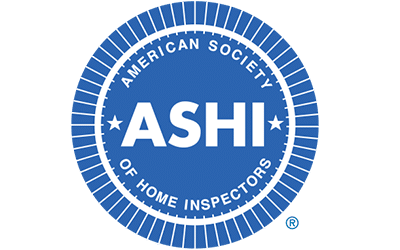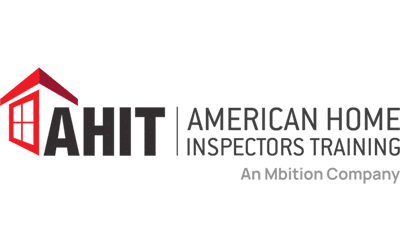Common Home Issues
There are several common home issues that are of concern to both homebuyers and sellers in today’s real estate market. Residential Inspector of America has provided a brief explanation of these common problems in the guide below. To learn more or for any questions, call our office today.
Radon is a gas emitted from decaying uranium found in soil, rock, and water. It is especially high in areas where granite is present. Radon is colorless, odorless, and tasteless, but it is a very deadly gas when inhaled in large quantities.
RIA tests for high levels of radon gas in homes. The EPA recommends radon testing upon the sale of all homes. Our inspectors conduct a 48-hour test using a continuous monitor. The monitor is left in the home and the inspector returns to pick it up after two days. Results of the radon test are ready shortly thereafter.
Mold spores are in the air all around us and can cause several health issues. They can also grow due to excess water inside the home. It’s important to understand what types of mold may be growing in the home and how to eliminate it.
It is not possible to determine whether a mold causes allergies or if it is a toxic mold without lab analysis. RIA’s inspectors conduct thorough mold testing, sending the samples to a lab to be analyzed. The lab will identify the types of mold growing in your home and also give specific direction on how it can be eliminated.
Some types of mold can be cleaned up relatively easily and others must be taken care of by an industrial hygienist. RIA can help you locate a mold remediator if necessary.
Subterranean termites are a major issue in Georgia because of our hot temperatures and high humidity levels. Termites forage 24/7 and researchers predict almost 100% of untreated homes in the southeast will become infested with termites!
Although a home may have a termite warranty, you always want to have a third party working on your behalf, inspecting for termites when purchasing a home. RIA offers termite inspections that can be scheduled at the same time as a home inspection.
A home with stucco siding has either hardcoat or synthetic stucco. Synthetic stucco can usually be identified by the following:
- It gives slightly when pressure is applied.
- It can be easily penetrated with a small screwdriver.
- It is hollow sounding.
Synthetic stucco was manufactured because it was more energy efficient than hardcoat, came in a variety of colors, and could be molded into any shape.
This type of stucco poses problems to the homeowner not because it is a bad product, but because it has been consistently installed incorrectly. When installed improperly, the stucco retains water, causing moisture problems including wood rot.
Homeowners and potential buyers can care for synthetic stucco by having an inspector conduct a moisture test, properly flashing and caulking all problem areas (doors, windows, gutters, bottom edges near soil), and having any necessary repairs made. Moisture will dissipate from the stucco if it is properly cared for.
RIA can inspect a synthetic stucco home for moisture problems using moisture scanners and probe meters.
Rodents find their way into homes through gaps at the roof line where shingles overlap as well as through holes around the foundation. Rodents and other pests cause all sorts of problems, such as:
- Damage to insulation, duct piping, and electrical wiring.
- Urine and feces left throughout the home.
- Allergies and other health concerns.
According to the EPA website, a high percentage of all homes built before 1978 contain lead-based paint:
- 87% before 1940
- 69% between 1940 - 1960
- 24% between 1960 - 1978
Lead-based paint can deteriorate, chip, and form dust particles. Inhaling or ingesting lead-based paint dust particles causes health problems in adults and especially in children. The CDC ranks lead poisoning as the number one threat facing small children today. Areas that should be paid special attention include windowsills, doors, and other areas of friction. By law, sellers and landlords must disclose known lead-based paint hazards.
Polybutylene piping was used in homes from 1979 -1995 and is estimated to be in one out of every four homes. Polybutylene pipes can be blue, gray, or black and are used for interior and exterior water piping.
Since polybutylene piping was cheaper and easier to install, it was seen as “the pipe of the future.” However, the pipes are susceptible to brittleness and sudden failure due to reactions with oxidants in the public water supply. In most cases, failure takes 10-15 years. Pipes deteriorate from the interior out, so it is difficult for the untrained eye to determine the condition of the pipe.
The deadline to file a claim for polybutylene piping in a home that has leaked is now expired.
Louisiana Pacific Siding (LP) is composed of wood chips and resins, including wafer board and OSB. It was manufactured because it was better for the environment and was easier and cheaper to work with. LP siding retains water due to improper manufacturing and causes shrinking, cracking, and molding of the siding.
LP has a unique identification feature that shows an L and upside-down P in the knothole. Your inspector can definitively identify if your home has LP siding. The deadline to file a claim in the LP class action suit passed on January 1, 2003.
Masonite is a siding production company and does not encompass all hardboard siding. In other words, Masonite is commonly used as a generic term. Before Louisiana Pacific siding was a known issue (around 1996), many inspectors called LP siding Masonite siding. An old inspection report naming the siding as Masonite could possibly be incorrect.
Masonite siding can be identified by a series of markings printed on the backside of a piece of siding. You must have a piece removed to see these markings, and thus positively identify the siding.
Masonite siding has experienced many problems, and a class action suit has been filed against the manufacturers of Masonite. Problems include:
- Buckling
- Penetrating nail heads
- Swelling
- Fungus growth
- Wax bleeding
The deadline to file a claim in the Masonite class action suit has passed.
Asbestos is a naturally occurring material that can only be identified under the microscope and is used in a variety of products for fire resistance, flexibility, and strength.
Asbestos fibers can remain suspended in the air for a long period of time because of their size and shape and can easily penetrate body tissues after being inhaled or ingested. Fibers can remain in the body for many years and can become the cause of an asbestos-related disease that may take up to 30 years to appear. Diseases include asbestosis, lung cancer, mesothelioma, and other related problems.
If a home has asbestos, what should you do? If the asbestos is in good condition, it should be left alone. Removal is complex and hazardous and should only be conducted by a professional.
Schedule an Inspection Today
Residential Inspector of America has conducted thorough home inspections since 1989. Call us today for an instant quote or schedule online now. We conduct many different inspections such as sewer line inspections, pool/spa inspections, pre-listing inspections, new construction inspections, and commercial inspections.




